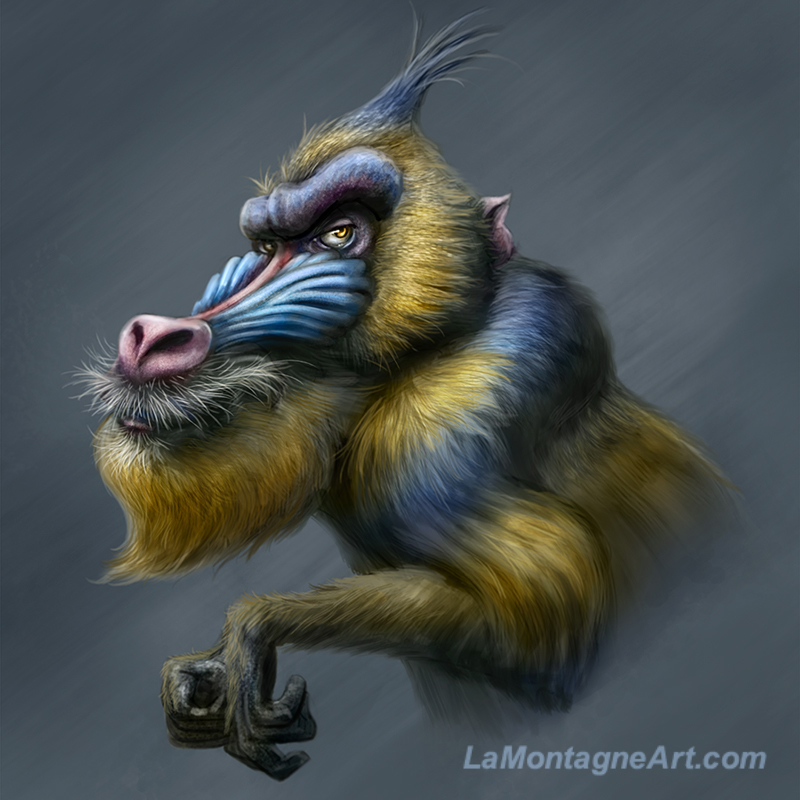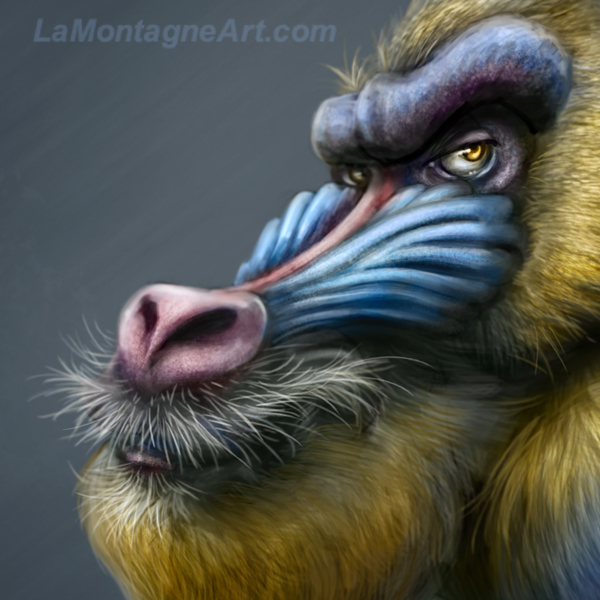
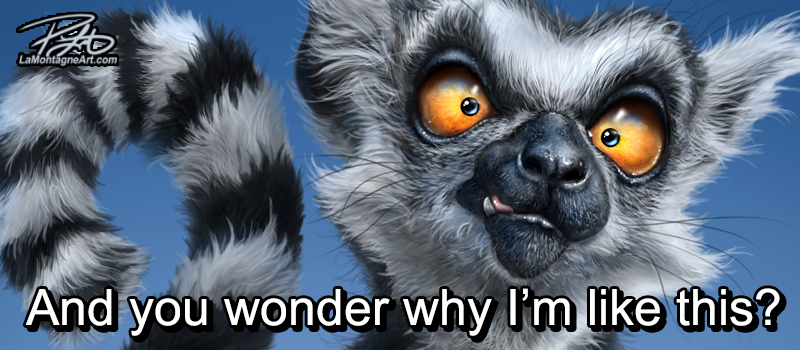 If your art becomes popular enough that people like it, share it and buy it, somebody will steal it. Some creatives stamp ugly watermarks across every image they post to try to combat this, but what’s the point if you need to go that far?
If your art becomes popular enough that people like it, share it and buy it, somebody will steal it. Some creatives stamp ugly watermarks across every image they post to try to combat this, but what’s the point if you need to go that far?
It’s not uncommon for people to remove my signature or change the wording in one of my editorial cartoons and then post it on social media with no credit or link to my site. It happens to every cartoonist. It strikes me especially funny when the alteration is so they can call a politician a liar, thief, or criminal.
Today’s word is irony.
On occasion, a company has stolen my work and offered it on an online product, usually in another part of the world. In most cases, a cease and desist is all it takes to remove it, and then they steal somebody else’s work. But in some countries, everything online is seen as free for the taking. I know artists who’ve been on vacation in Thailand and seen their work sold at roadside market stands.
If you’re shocked by this, remember that scammers bilk senior citizens out of their retirement savings every day. Humanity has more than its fair share of bottom-feeding scumbags. Art theft isn’t even close to the worst of it.
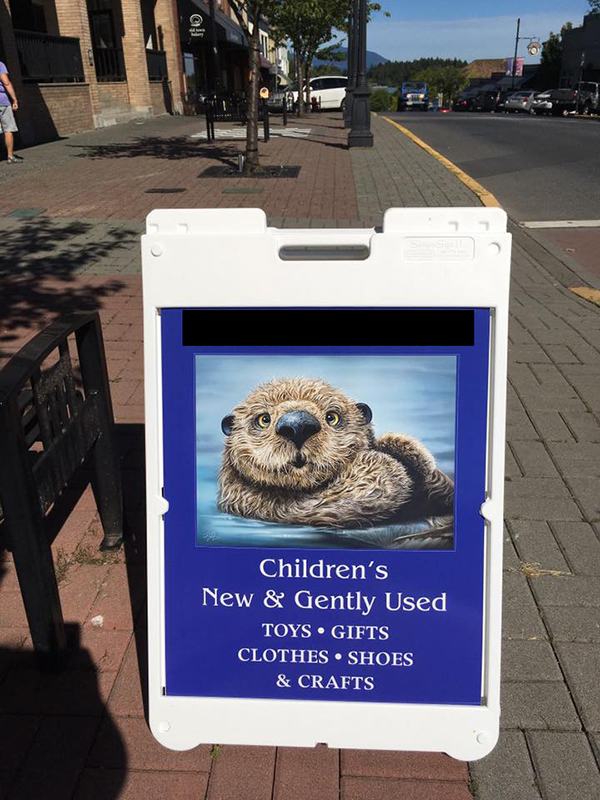 Several years ago, my friend Kathryn alerted me to a woman on Vancouver Island using my Otter painting as the logo for her business. It was on her business cards, a sidewalk sandwich board, window decals and advertising. When I called the owner on it, she said she Googled ‘royalty-free images’ and my otter came up. I asked if Mickey Mouse had come up in that search, would she think Disney would allow her to use him as her logo? My signature is still on the image on that sign! She angrily told me I was being unreasonable and said if I had been nicer, we could have come to an arrangement.
Several years ago, my friend Kathryn alerted me to a woman on Vancouver Island using my Otter painting as the logo for her business. It was on her business cards, a sidewalk sandwich board, window decals and advertising. When I called the owner on it, she said she Googled ‘royalty-free images’ and my otter came up. I asked if Mickey Mouse had come up in that search, would she think Disney would allow her to use him as her logo? My signature is still on the image on that sign! She angrily told me I was being unreasonable and said if I had been nicer, we could have come to an arrangement.
Based on such a trustworthy beginning, I clearly missed out on untold riches.
On a trip to Vancouver Island, we stopped in Ladysmith to ensure it wasn’t still going on. She’d sold the store, and my work was nowhere to be seen. That’s why I’ve blacked out the name in the photo.
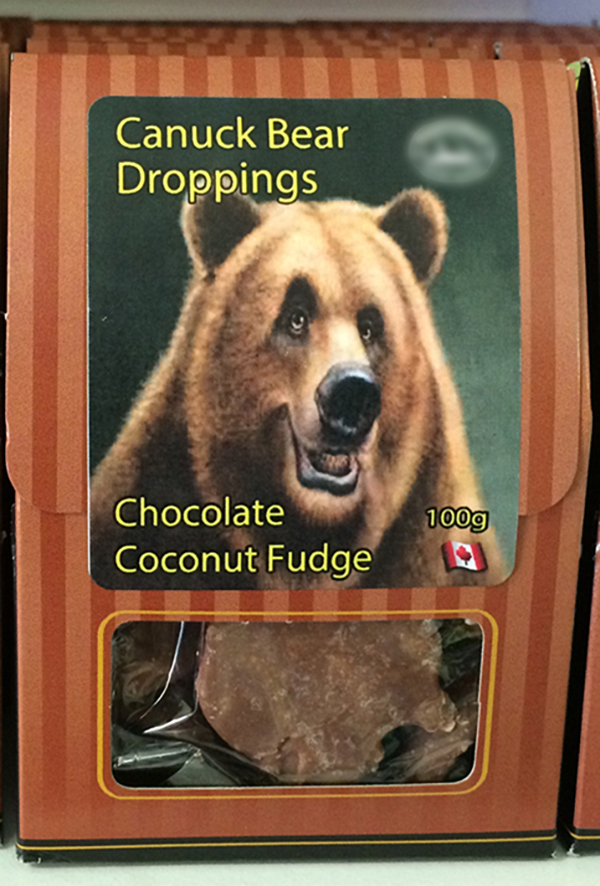 Another company in the same area had my Moose and Grizzly Bear paintings on their chocolate-covered candy labels sold in a local store. The company’s owner in Eastern Canada said they’d hired a graphic designer to make the labels. He just stole my work online and passed it off as his own.
Another company in the same area had my Moose and Grizzly Bear paintings on their chocolate-covered candy labels sold in a local store. The company’s owner in Eastern Canada said they’d hired a graphic designer to make the labels. He just stole my work online and passed it off as his own.
The owner apologized and said he would remove the offending images from his products.
People will frequently look down on artists for not having ‘real jobs,’ or expect us to work for free or the ever-popular ‘exposure.’ Every time I try to pay my bills with this mythical currency, companies laugh at me. I guess it’s only good for art.
For many people, art is their business; when somebody steals from your business, you must deal with them. If it’s an overseas company in a country with lax copyright laws, you could sell your house and spend it all on lawyers, and you still wouldn’t win.
You pick the hill you want to die on.
Which brings me to last week.
A woman in Nevada has been selling my artwork as her own, alongside what I can only assume is questionable CBD potions. As far as I can figure, she has purchased canvases of some of my work, likely from print-on-demand sites like Art.com, Wayfair, iCanvas, and others.
These companies were licensed to sell my work through agreements I signed when represented by Art Licensing International. I ended that relationship early last year, but these companies had contracts with the rights to sell my work until the end of their terms.
Most of those have expired, so even though you can still see my work on some sites, you can’t order it anymore. I’ll write another post later on why I don’t find those sites appealing.
Since the art thief has been doing this for a few years or longer, I suspect that’s where she got them since I don’t post high-resolution images on my site. She then applied some brushstrokes to those canvases and sold them as her original work.
At Photoshop World Las Vegas in 2014, I took a class from a New York copyright lawyer. He was an entertaining character but knew his stuff and had represented plenty of artists who’d been ripped off. His advice even saved me from a deal I worked on that very week with a couple of scammers in Calgary.
The lawyer talked about the oft-quoted 10% rule, the belief that if you change another artist’s work enough, copyright no longer applies, so that you can resell it as your own. He shared the official legal term for that rule; Bullshit.
It’s the kind of thing amateur creatives tell each other to justify stealing.
According to Canadian and United States law, an artist owns copyright to their work as soon as they create it. However, officially registering allows you to claim more financial damages when suing somebody for a breach.
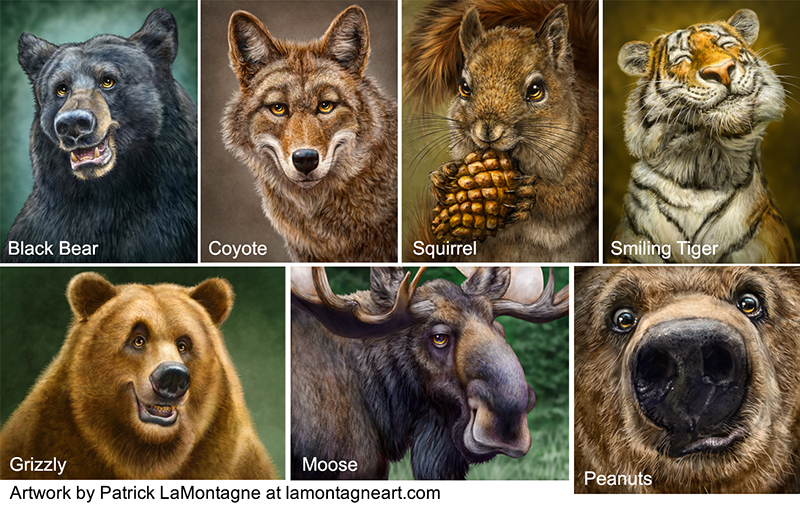 From what I’ve found, she stole my Coyote, Grizzly, Black Bear, Moose, Squirrel, Peanuts and Smiling Tiger paintings, but likely more than that. While the first five are no longer bestsellers, and a couple are even retired, my Smiling Tiger and Peanuts paintings are two of my most popular, bestselling and frequently licensed images.
From what I’ve found, she stole my Coyote, Grizzly, Black Bear, Moose, Squirrel, Peanuts and Smiling Tiger paintings, but likely more than that. While the first five are no longer bestsellers, and a couple are even retired, my Smiling Tiger and Peanuts paintings are two of my most popular, bestselling and frequently licensed images.
Stupid is as stupid does.
She advertised that she’d be showing her art all month at a venue in Nevada, complete with photos on her website, Facebook and Instagram. She removed the image from her webpage, but I saw that coming and captured screenshots. Not my first rodeo. I have blacked out some areas of the image that may unfairly implicate others.
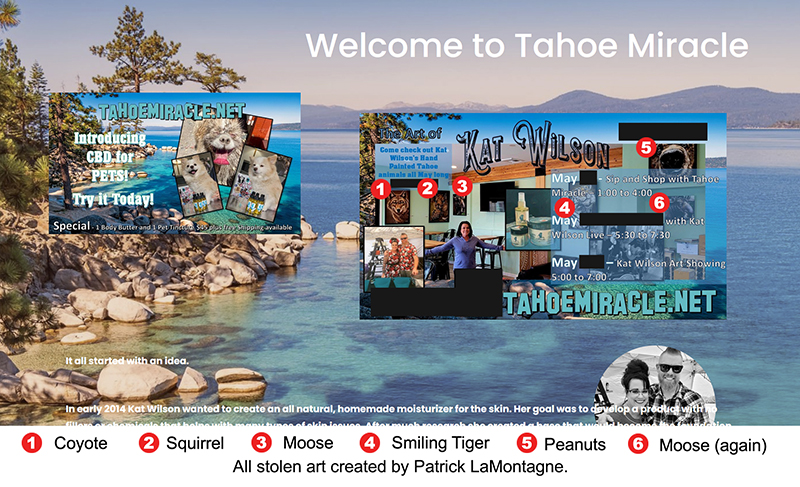 I contacted the venue and informed them that this ‘artist,’ for lack of a better term, had stolen my work. I included several links to my site, blog posts where I wrote about the images when I had painted them, and links to companies that licensed my art. And while I told them I didn’t blame them for the infraction, I suggested they distance themselves from the offender.
I contacted the venue and informed them that this ‘artist,’ for lack of a better term, had stolen my work. I included several links to my site, blog posts where I wrote about the images when I had painted them, and links to companies that licensed my art. And while I told them I didn’t blame them for the infraction, I suggested they distance themselves from the offender.
The response from the venue was better than I’d hoped. They apologized (not their fault), told me they removed the canvases from their walls and even copied me on an email they sent to the fraudulent artist. In it, they told her she was no longer welcome there, and if she wanted to collect her canvases, they’d be at the local Sheriff’s office for retrieval.
She declined to pick them up.
You don’t say.
I had also contacted a friend who lives in that area and asked if she knew the place. She said she did and spoke highly of it. I don’t believe they’re complicit, and as the business is also a victim of this fraud, I see no need to name them.
I have sent emails to other events she’s advertised on her site and to markets where she has sold my work in the past, informing them of the theft and asking them to cancel her registrations.
I am not an advocate of cancel culture and trial by media. Some people don’t know what a reasonable response is, and internet vigilantism seems to have one setting: scorched earth.
That said, given what I’ve seen, she has been stealing my artwork for years. The problem is that when I searched for her online, I came across a few other legitimate artists with the same name, and I don’t want them confused with this thief. It takes very little time to cancel somebody, and it’s nearly impossible to reverse it when you’ve got the wrong person.
So, instead, I’ve shared the photos from her site. I’ve blacked out the venue name and details but left her name intact. Since references to and images of my work are still up on her Instagram and Facebook, I’m also linking to those. The artwork may be removed when you read this, as I’ll share links to this post in her comments section. She has removed my images from the front page of her website.
From a cease-and-desist email I sent her, she responded, “Patrick. I’m very sorry. I will never paint again. The paintings I have will be destroyed. Kat.”
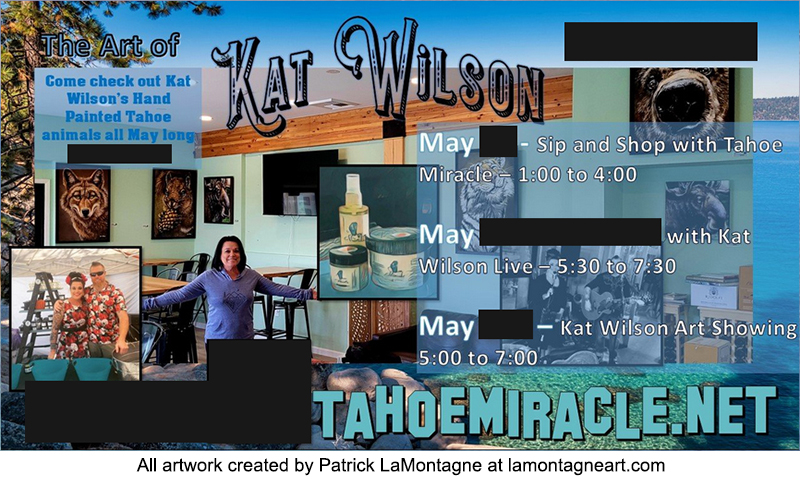 After a whole career dealing with this kind of thing, I am firm-footed in ‘fool me twice’ territory. Her reply almost stopped me from writing this post, but she’s standing proudly in that photo with six large canvases of an art style I’ve spent years developing. And 24 hours after her apology, my work is still visible on her social media with mentions of her amazing paintings. Very sincere.
After a whole career dealing with this kind of thing, I am firm-footed in ‘fool me twice’ territory. Her reply almost stopped me from writing this post, but she’s standing proudly in that photo with six large canvases of an art style I’ve spent years developing. And 24 hours after her apology, my work is still visible on her social media with mentions of her amazing paintings. Very sincere.
Genuinely sorry, or sorry you got caught?
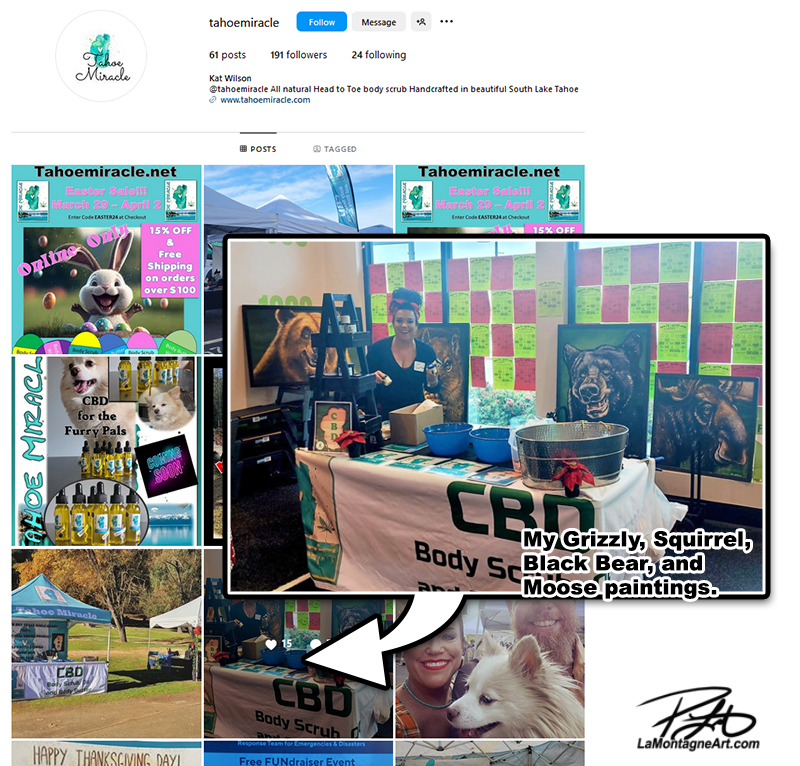 If your only available settings for creating art are stealing it or not painting at all, I’m at a loss to understand why you’d bother pretending to be an artist. Choose a profession more suited to questionable morality, like federal politics.
If your only available settings for creating art are stealing it or not painting at all, I’m at a loss to understand why you’d bother pretending to be an artist. Choose a profession more suited to questionable morality, like federal politics.
I’m sharing this story as a cautionary tale and a teaching moment. If you’re an artist learning new skills, copying somebody else’s technique, studying their methods, and imitating other styles to find your own is part of the process. That’s what every artist does. It’s how we learn. Eventually, you get tired of being a poor copy and strive to become an original.
But don’t steal somebody else’s artwork and pass it off as your own. It’s happened to every artist I know, and it can quickly become an open wound that never heals. People will find out. Artists routinely reverse-search their own images to catch this sort of thing, though I found out about this infraction another way.
When one artist sees another ripped off, they will tell them about it because we all know how it feels. In some cases, if the artist is popular enough, their community of followers will destroy you online. I’ve seen it happen more than once. It’s brutal.
Dealing with this issue has taken way too much of my time this past week, time I’d much rather have spent painting. It should be obvious why this got bumped up on the priority list.
While I’m not happy about this situation, I’ve mellowed in my older middle age, and I’m not raging or losing sleep over this. It would be naïve for her to imagine several years of theft can be erased by three short sentences in an email, with little action to back up her supposed remorse. I don’t know how much of my artwork she sold, but I’m confident I won’t get a cheque in the mail. And anyone who bought my work from her likely won’t get refunds.
I’ll keep an eye on her to make sure she stops stealing my work, and if further evidence presents itself of ongoing fraud, I’ll make it as uncomfortable as possible for her to continue.
And if she suddenly finds a new art style (she’s done this before), you can bet I’ll do my best to let the next victim know about it and help them in any way I can.
Cheers,
Patrick



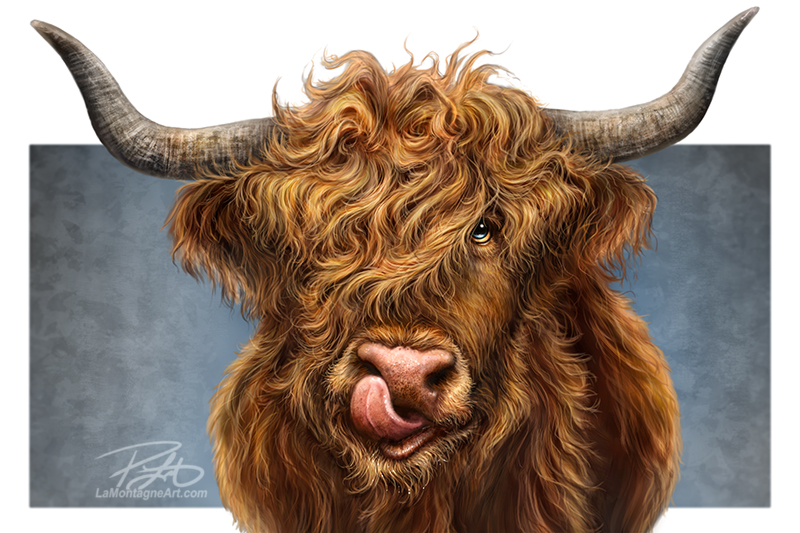 At the Banff Christmas Market late last year, I received several requests for a Highland Cow painting.
At the Banff Christmas Market late last year, I received several requests for a Highland Cow painting.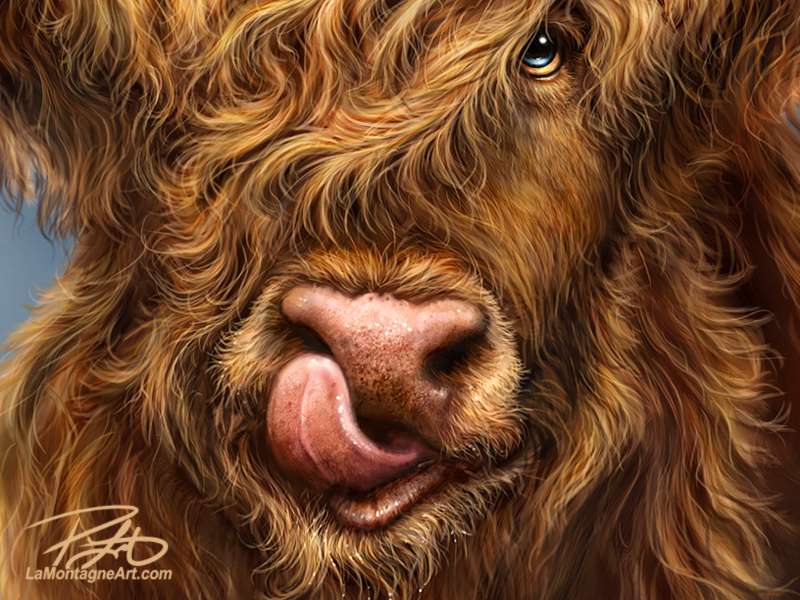 And still, every painting comes with challenges and choices.
And still, every painting comes with challenges and choices.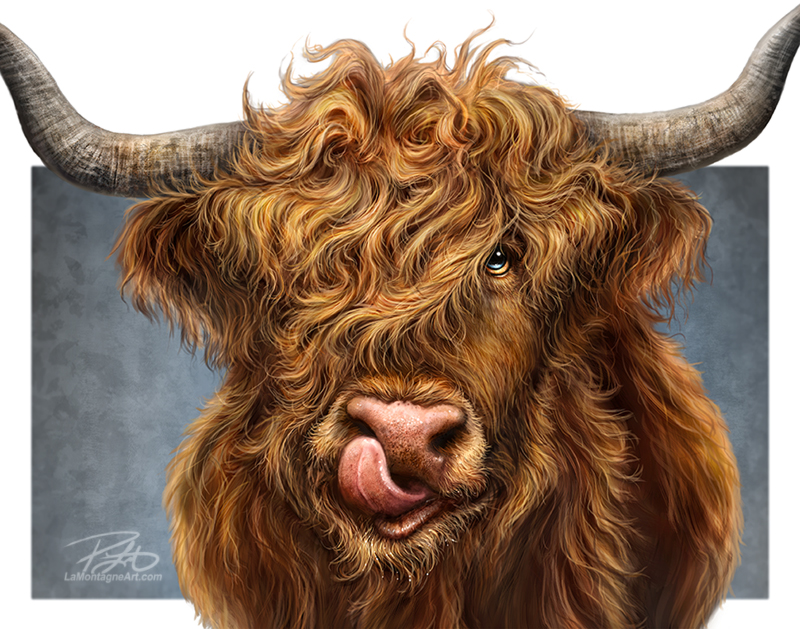
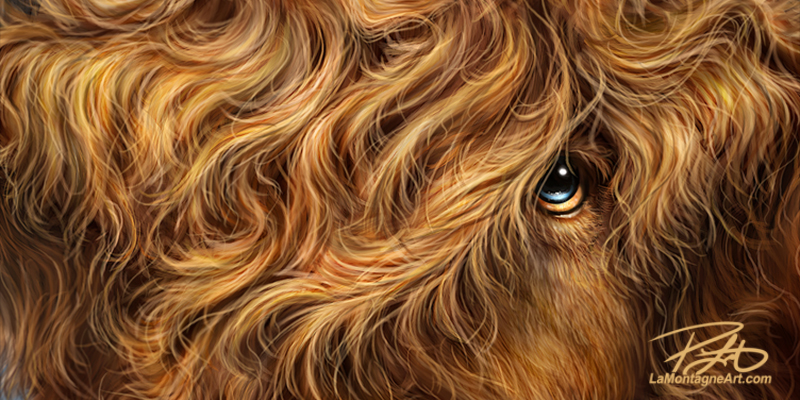 I could have worked on this painting for another week, and nobody would know the difference but me. Eventually you just have to call it done, let it go, and start on another one.
I could have worked on this painting for another week, and nobody would know the difference but me. Eventually you just have to call it done, let it go, and start on another one.

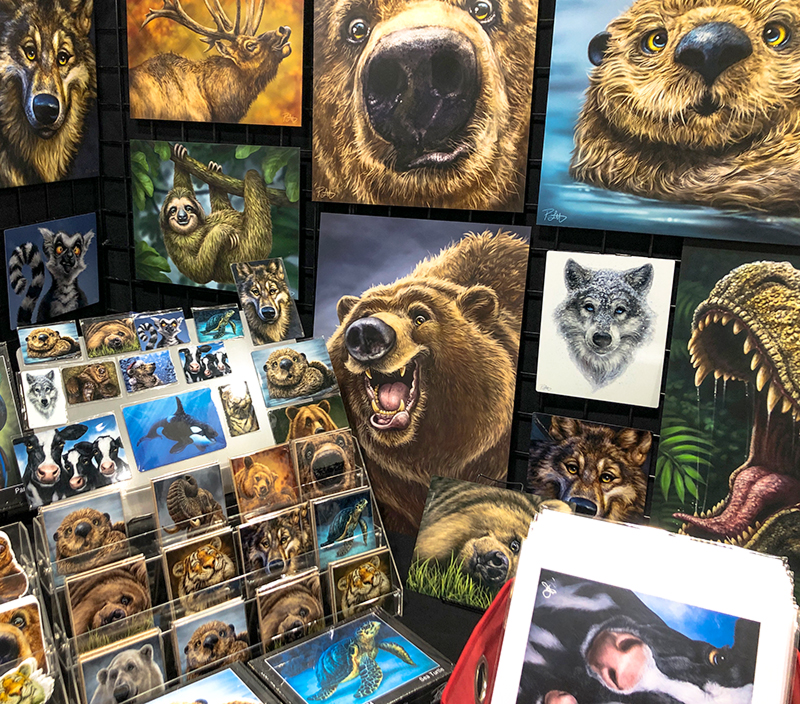 It’s been a busy week of post-show inventory, filling custom orders, drawing editorial cartoons and stowing my stock and booth hardware, but that’s normal after my biggest event of the year.
It’s been a busy week of post-show inventory, filling custom orders, drawing editorial cartoons and stowing my stock and booth hardware, but that’s normal after my biggest event of the year.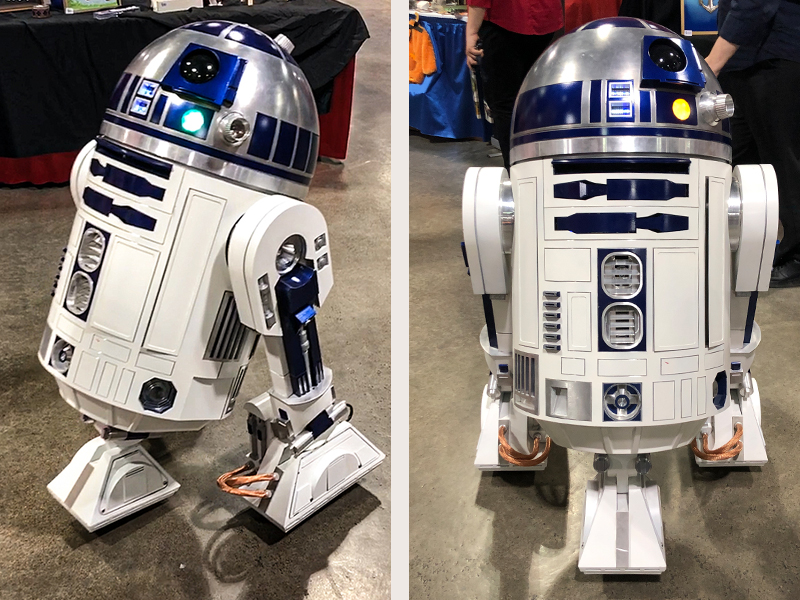 It still pushes the childhood buttons when a fully functional R2-D2 glides by my booth. With a rotating head, lights, whistles and sound effects, panels that open and close, and full mobility, it looks and behaves like the real thing. I even know the guy who manufactured it; I used to work for him years ago in Canmore. So I know he’s running it by remote control from about ten feet away, that it’s all mechanical gears, parts, and wires. But the illusion that it’s the beloved movie character is strong.
It still pushes the childhood buttons when a fully functional R2-D2 glides by my booth. With a rotating head, lights, whistles and sound effects, panels that open and close, and full mobility, it looks and behaves like the real thing. I even know the guy who manufactured it; I used to work for him years ago in Canmore. So I know he’s running it by remote control from about ten feet away, that it’s all mechanical gears, parts, and wires. But the illusion that it’s the beloved movie character is strong.
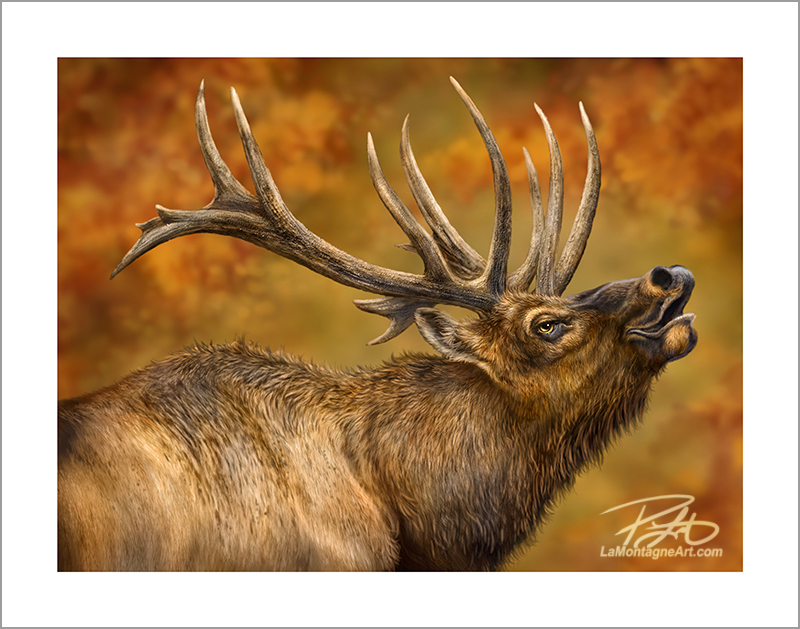 Several folks stopped by to tell me that their friend or family member couldn’t make it to Expo this year, but they wanted them to say Hello for them.
Several folks stopped by to tell me that their friend or family member couldn’t make it to Expo this year, but they wanted them to say Hello for them. People walk by the booth, their eyes scan the art walls, and they smile. Then they nudge whoever they’re with and point, and the smile infects that person, too. I’ve talked about this before, but it’s like a drug. I can’t get enough of it.
People walk by the booth, their eyes scan the art walls, and they smile. Then they nudge whoever they’re with and point, and the smile infects that person, too. I’ve talked about this before, but it’s like a drug. I can’t get enough of it.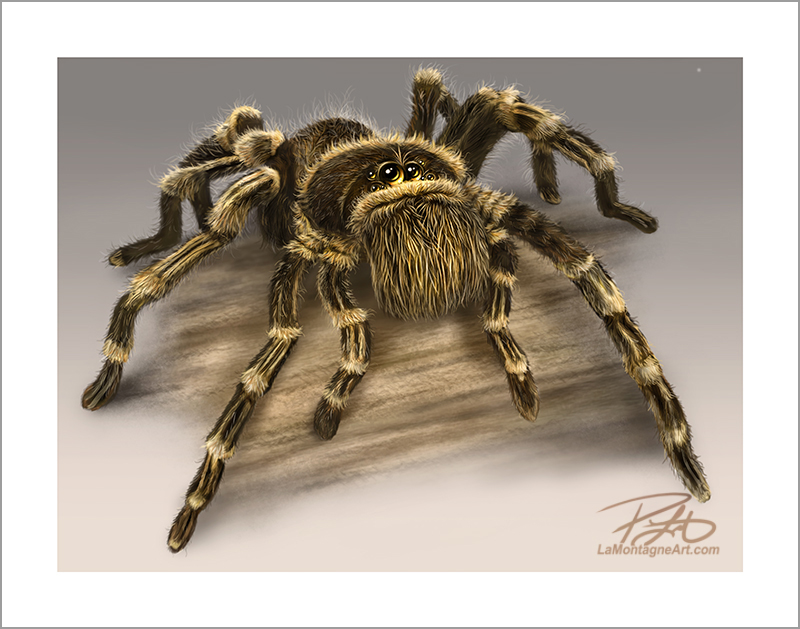 And, of course, it wouldn’t be Expo without a well-meaning follower reminding me that I am long overdue on my promise of a book. Imposter syndrome, perfectionism, I don’t know what my problem is there. My failure to launch bothers me more than anybody else. But the push is well deserved, Kim! Thank you for that.
And, of course, it wouldn’t be Expo without a well-meaning follower reminding me that I am long overdue on my promise of a book. Imposter syndrome, perfectionism, I don’t know what my problem is there. My failure to launch bothers me more than anybody else. But the push is well deserved, Kim! Thank you for that.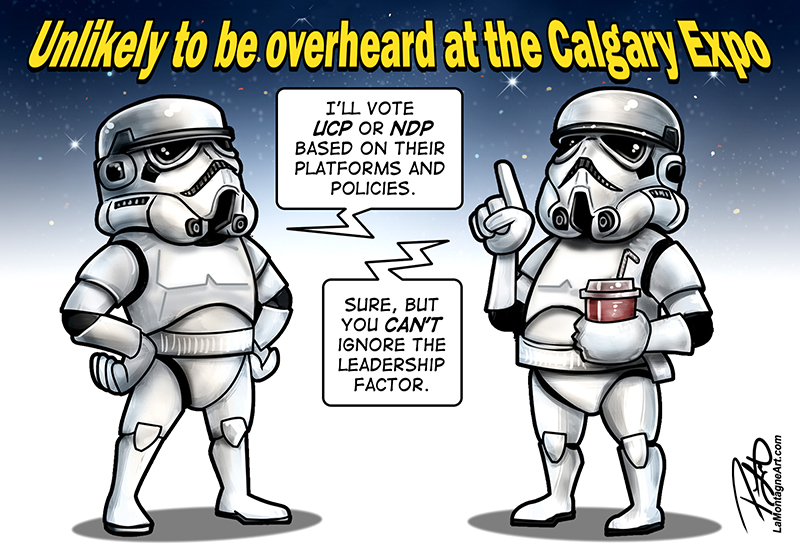


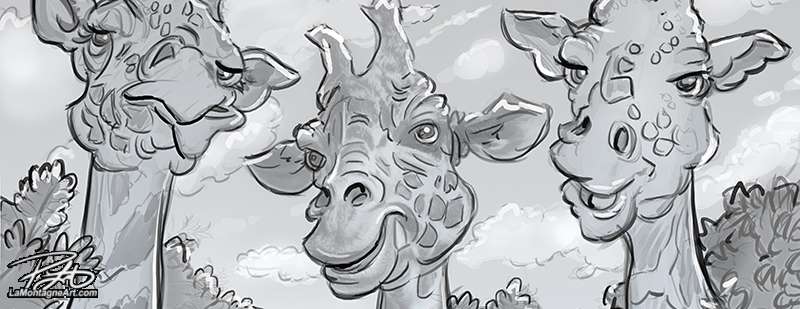 In 2008, I hosted the Canadian Editorial Cartoonists Conference in Banff. Several industry veterans who attended came up in a culture where busy unionized daily newspapers hired editorial cartoonists for impressive salaries, benefits, and pensions. I began my career at the end of all that.
In 2008, I hosted the Canadian Editorial Cartoonists Conference in Banff. Several industry veterans who attended came up in a culture where busy unionized daily newspapers hired editorial cartoonists for impressive salaries, benefits, and pensions. I began my career at the end of all that.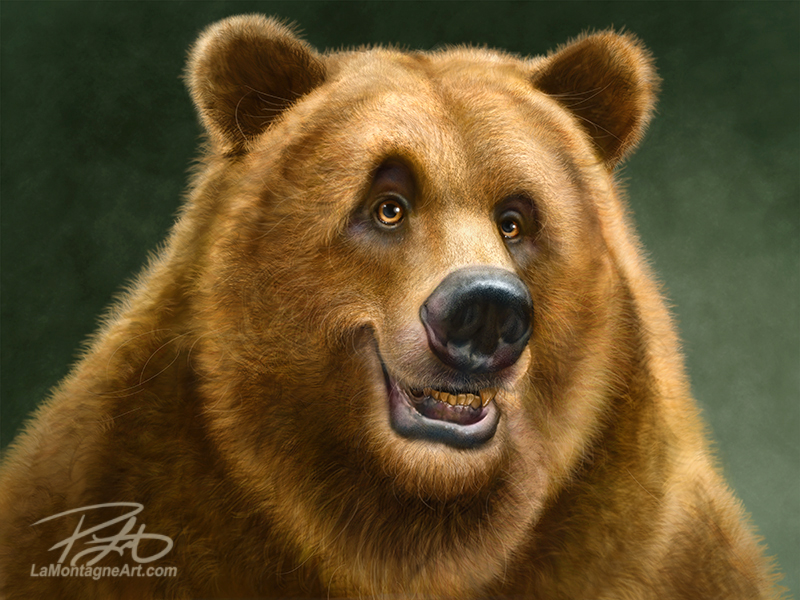
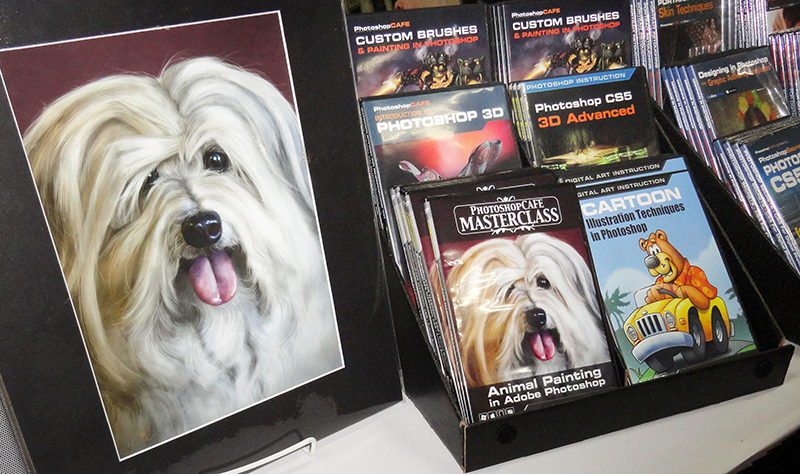 Eventually, social media killed the forum, and the organization rebranded. As a result, NAPP no longer exists, and the Photoshop World conference is a ghost of its former self.
Eventually, social media killed the forum, and the organization rebranded. As a result, NAPP no longer exists, and the Photoshop World conference is a ghost of its former self.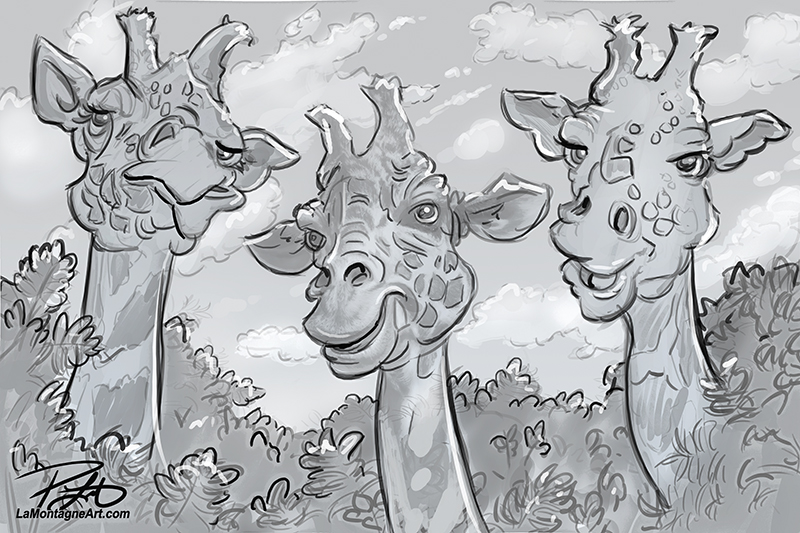 I’ve taken a new approach with the trio of giraffes, already titled “Long Neck Buds.” I don’t know if it will work the way I imagine it, but if it does, it will be the first of several I plan to paint this way.
I’ve taken a new approach with the trio of giraffes, already titled “Long Neck Buds.” I don’t know if it will work the way I imagine it, but if it does, it will be the first of several I plan to paint this way.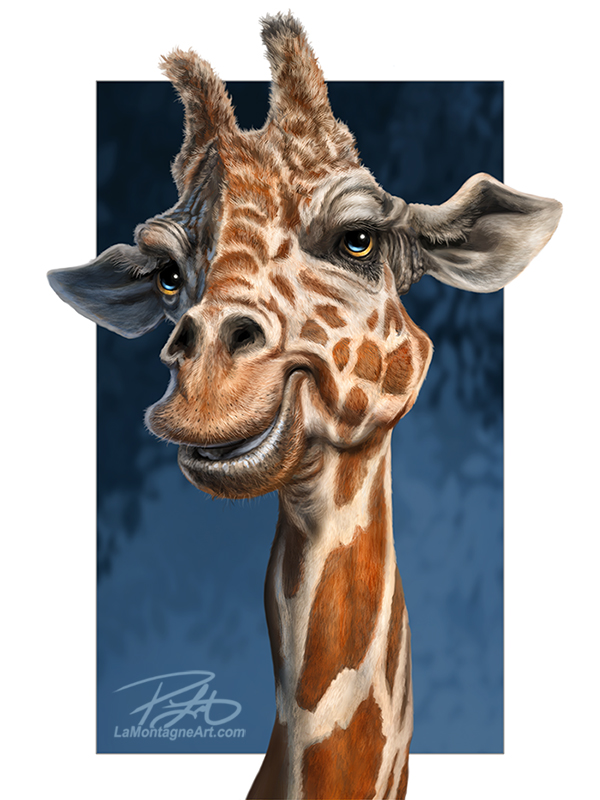 I’m a commercial artist, it’s how I make my living. I don’t pretend otherwise. But this is also supposed to be fun. I want to paint more detailed and elaborate images I’ll enjoy while also leaving options open for clients and licenses with different needs.
I’m a commercial artist, it’s how I make my living. I don’t pretend otherwise. But this is also supposed to be fun. I want to paint more detailed and elaborate images I’ll enjoy while also leaving options open for clients and licenses with different needs.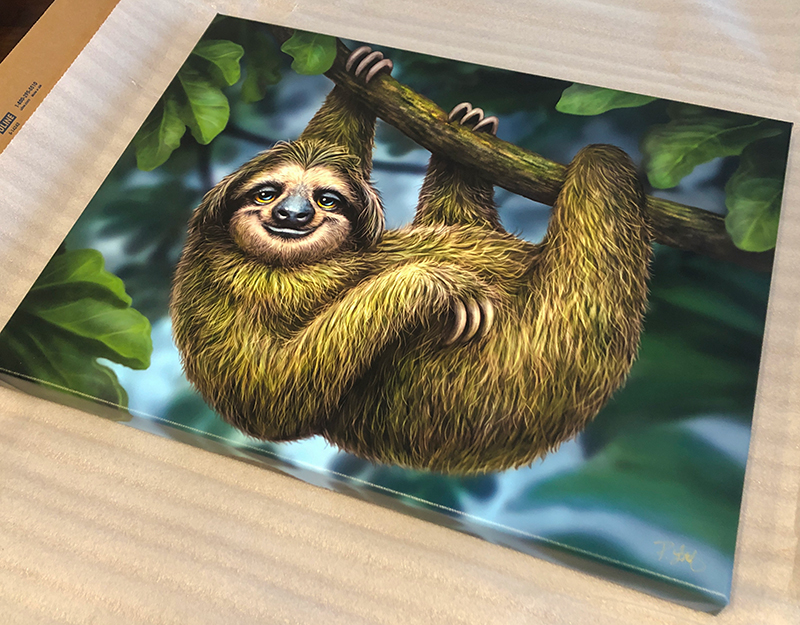
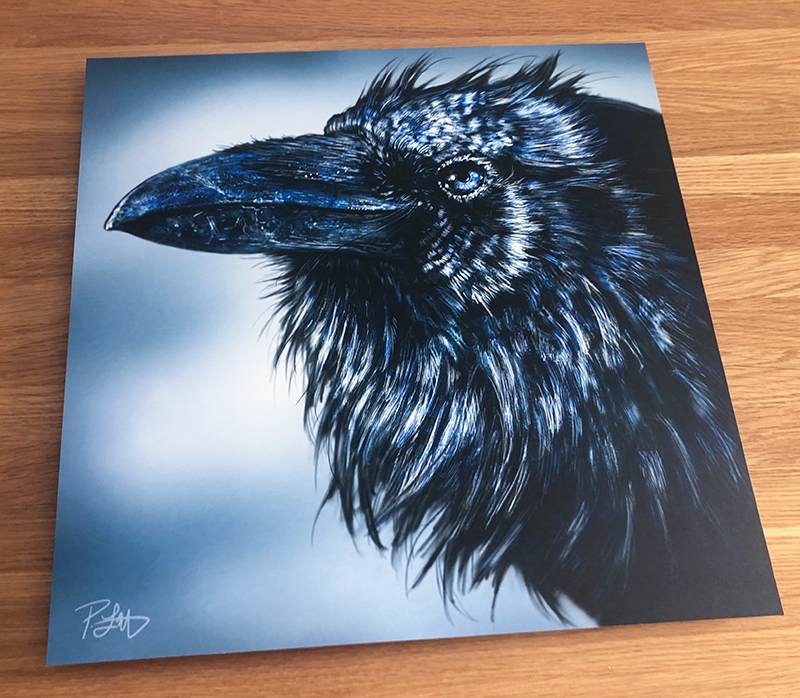

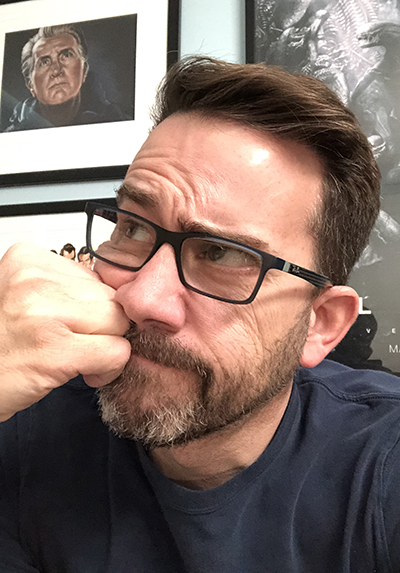 When I started drawing
When I started drawing 
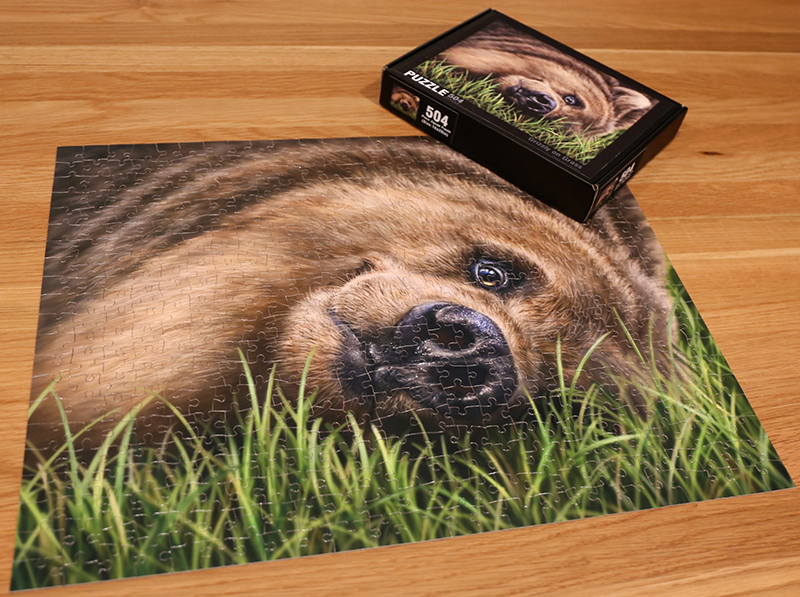 A couple of years ago, through an art licensing agency,
A couple of years ago, through an art licensing agency, 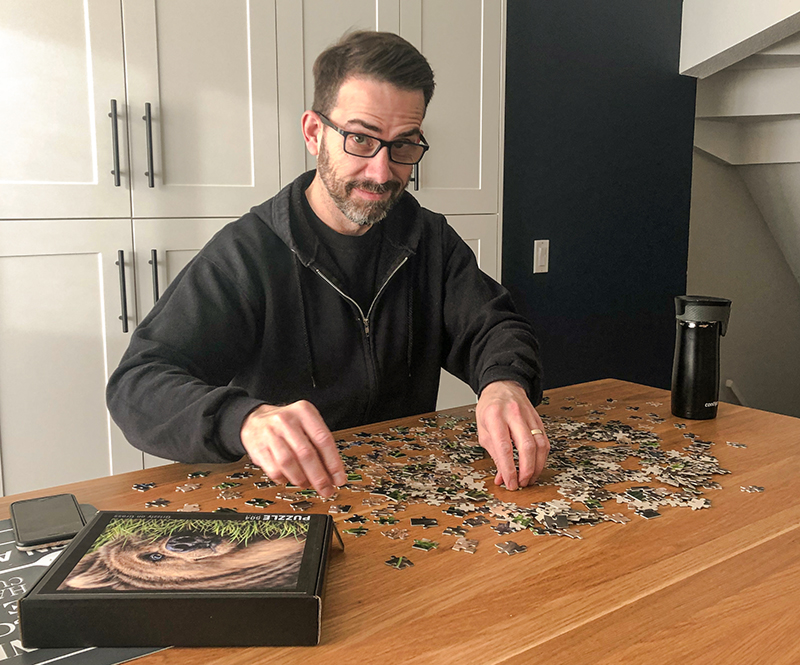 We laughed at our own arrogance, thinking this would be an afternoon diversion for a few hours. Instead, it took us several hours each day for three days to assemble it. Neither of us remembers the last time we put a puzzle together, so it’s unlikely we’ve done one as adults.
We laughed at our own arrogance, thinking this would be an afternoon diversion for a few hours. Instead, it took us several hours each day for three days to assemble it. Neither of us remembers the last time we put a puzzle together, so it’s unlikely we’ve done one as adults.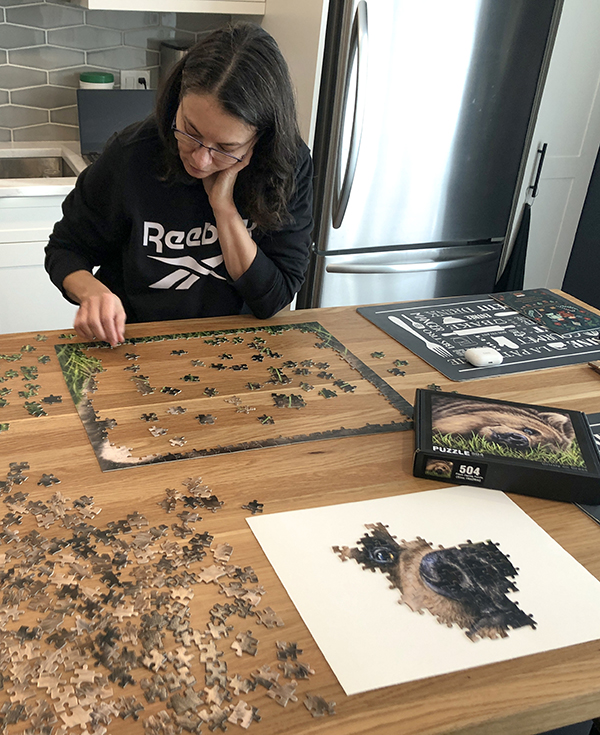 It became an obsession for both of us. After dinner last Thursday night, I asked Shonna what she wanted to watch on TV. She said she’d much rather work on the puzzle, and I agreed. I was pleased with the whole experience, though we were disappointed when it was over. We did, however, learn a valuable lesson on this one. Don’t assemble a puzzle with a lot of brown and beige texture on a surface with a lot of brown and beige texture. Newbie mistake.
It became an obsession for both of us. After dinner last Thursday night, I asked Shonna what she wanted to watch on TV. She said she’d much rather work on the puzzle, and I agreed. I was pleased with the whole experience, though we were disappointed when it was over. We did, however, learn a valuable lesson on this one. Don’t assemble a puzzle with a lot of brown and beige texture on a surface with a lot of brown and beige texture. Newbie mistake.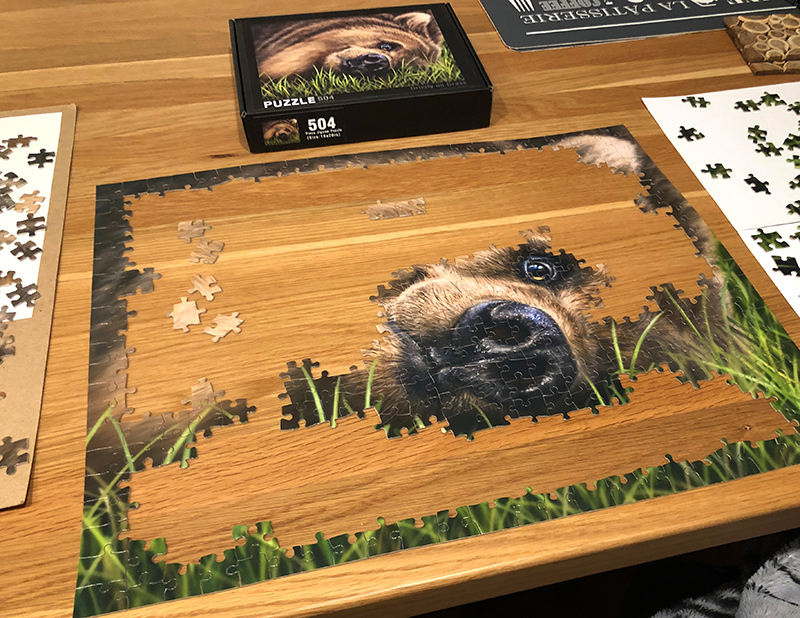 This puzzle is 16″ X20″ with 504 pieces, which will be the dimensions and count for the first orders. For casual puzzlers like us, it’s the perfect size and difficulty. However, it wasn’t too easy, and we could get it done and still enjoy it.
This puzzle is 16″ X20″ with 504 pieces, which will be the dimensions and count for the first orders. For casual puzzlers like us, it’s the perfect size and difficulty. However, it wasn’t too easy, and we could get it done and still enjoy it.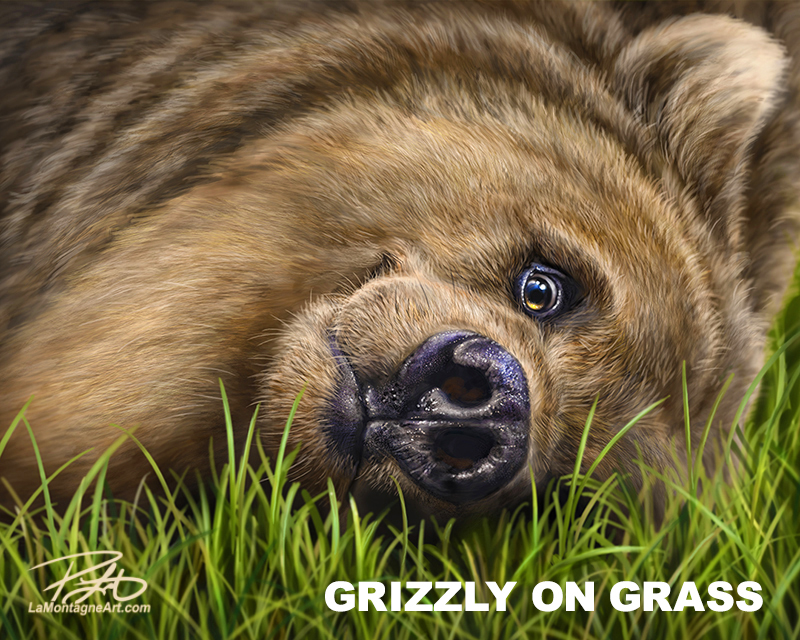
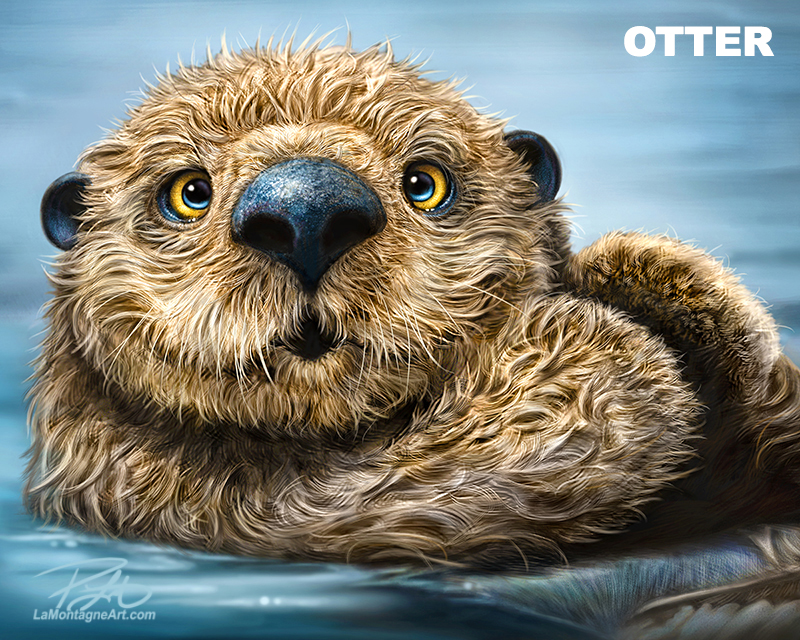
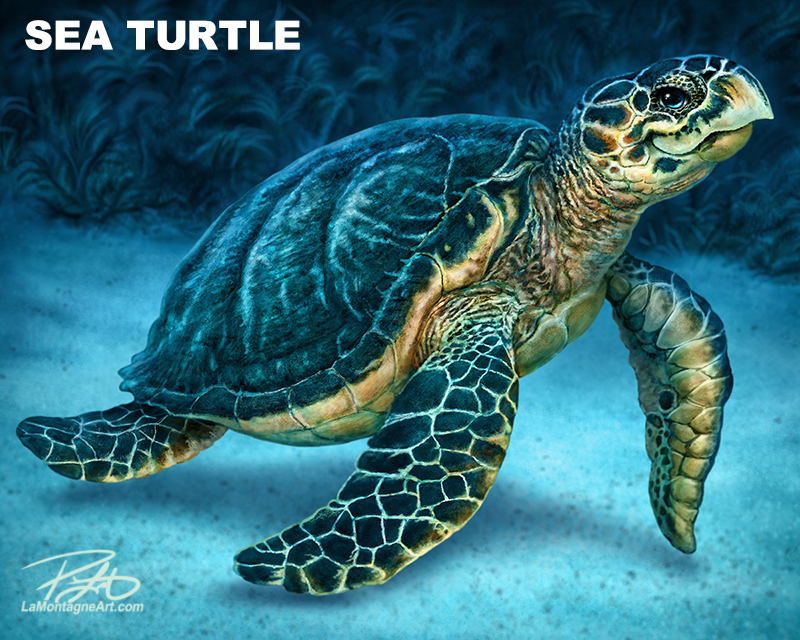
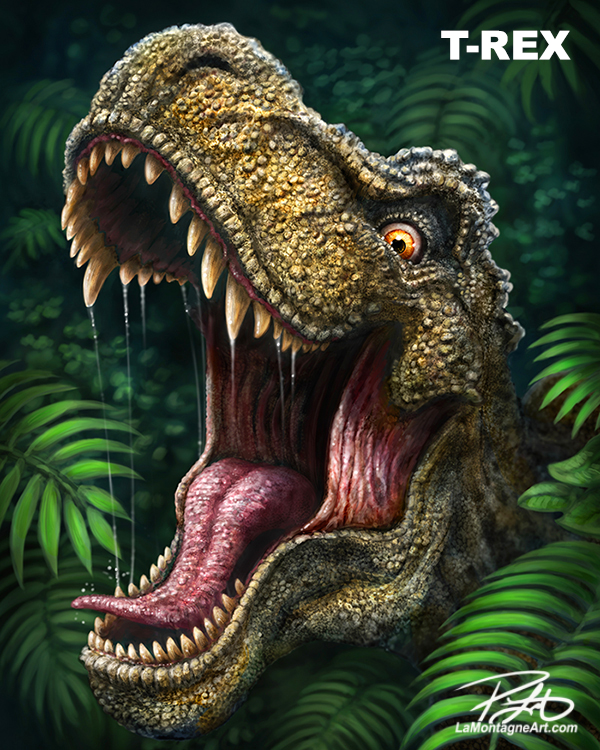 I’m also considering these cropped versions of the Flamingo, Parrot, Squirrel, Ring-tailed Lemur, and Snow Day.
I’m also considering these cropped versions of the Flamingo, Parrot, Squirrel, Ring-tailed Lemur, and Snow Day.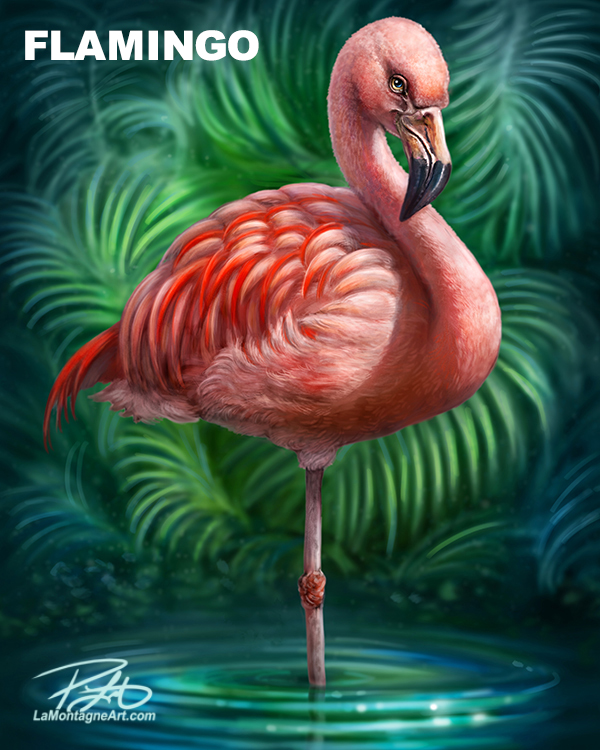
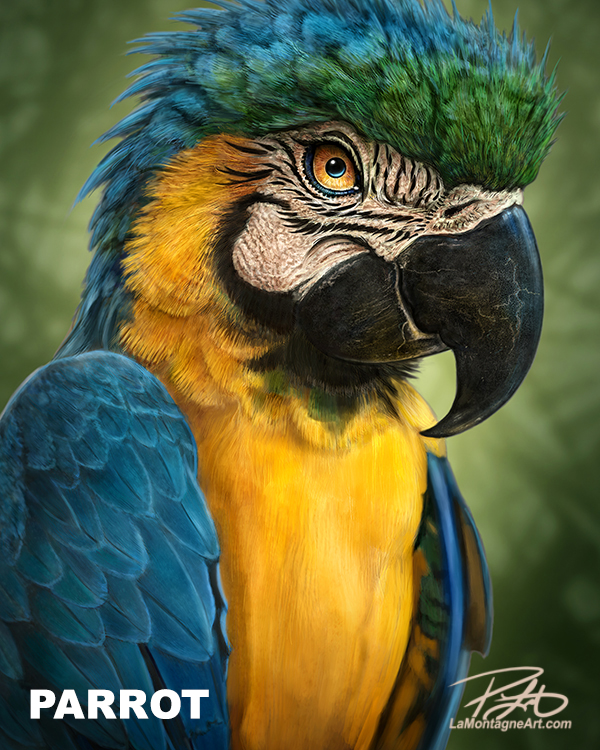
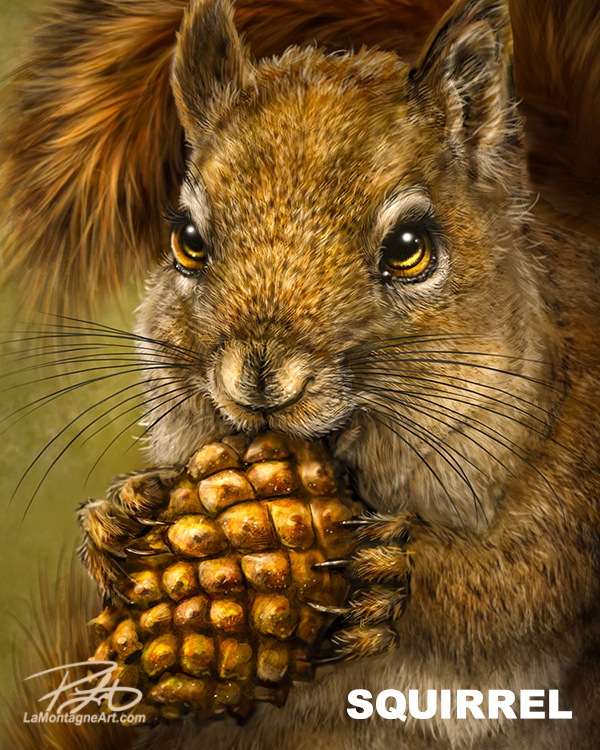
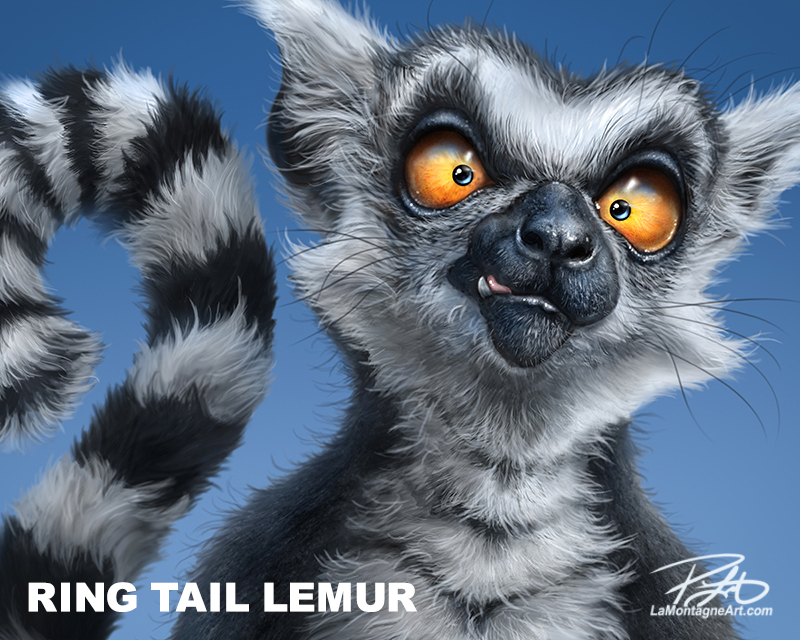
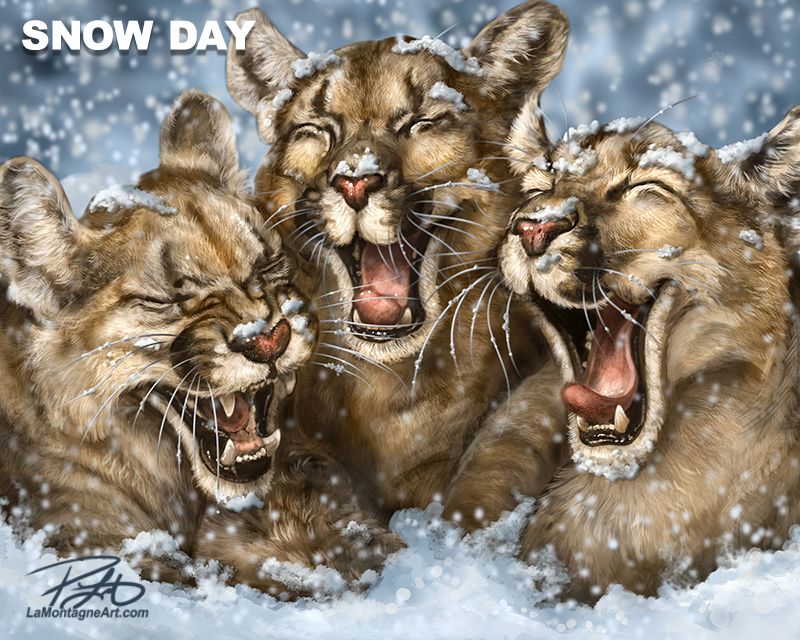 But I’d love to hear your opinion.
But I’d love to hear your opinion.
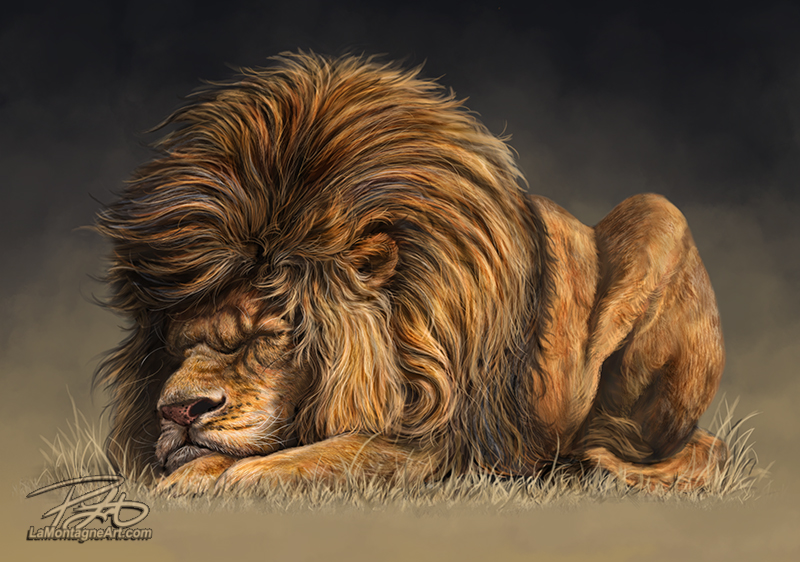 We’ve had fantastic fall weather this year in the mountains. The leaves took a long time to change, and there are still plenty on the trees. It’s been almost like summer, right up until last week, with our first snowfall. A warming climate is a growing concern, but it has been hard to see that big picture lately while still biking in shorts in the middle of October.
We’ve had fantastic fall weather this year in the mountains. The leaves took a long time to change, and there are still plenty on the trees. It’s been almost like summer, right up until last week, with our first snowfall. A warming climate is a growing concern, but it has been hard to see that big picture lately while still biking in shorts in the middle of October.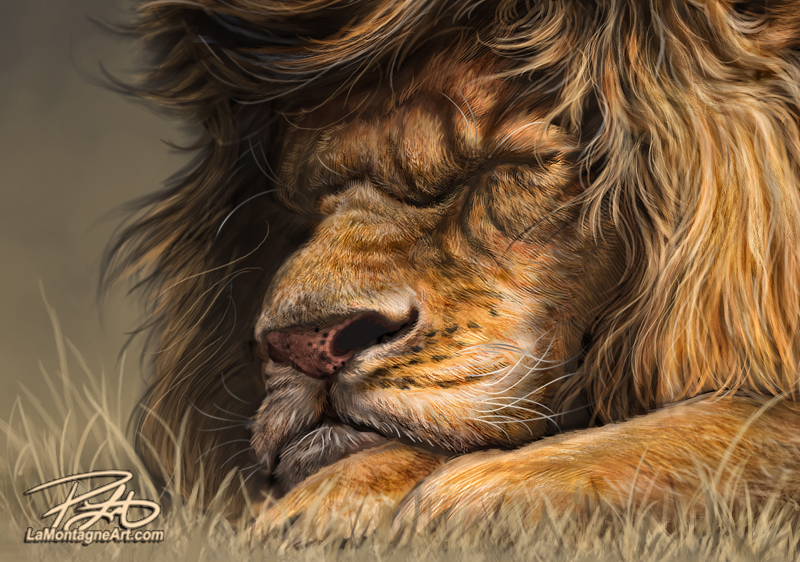 I have been working on another cute, happy painting of a grizzly bear for the past couple of months. I’m recording the process and writing a narrative to go with it. These videos take a lot more time than a regular piece. Recording the painting, writing the text, recording the voice-over, selecting the music, and editing it all add hours to the work.
I have been working on another cute, happy painting of a grizzly bear for the past couple of months. I’m recording the process and writing a narrative to go with it. These videos take a lot more time than a regular piece. Recording the painting, writing the text, recording the voice-over, selecting the music, and editing it all add hours to the work.
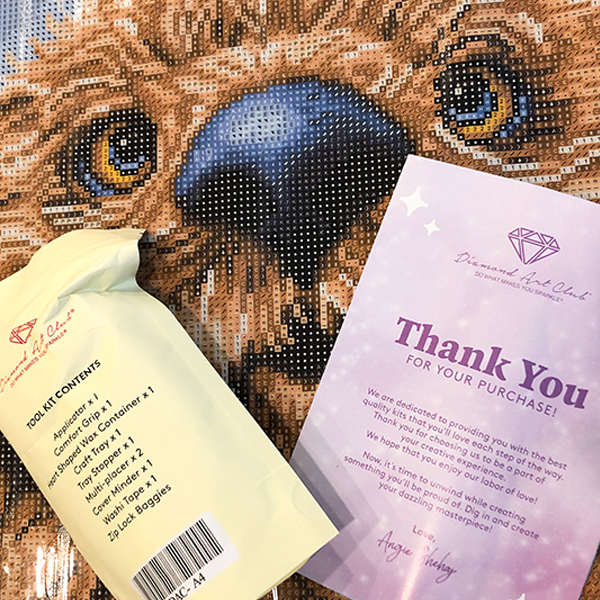
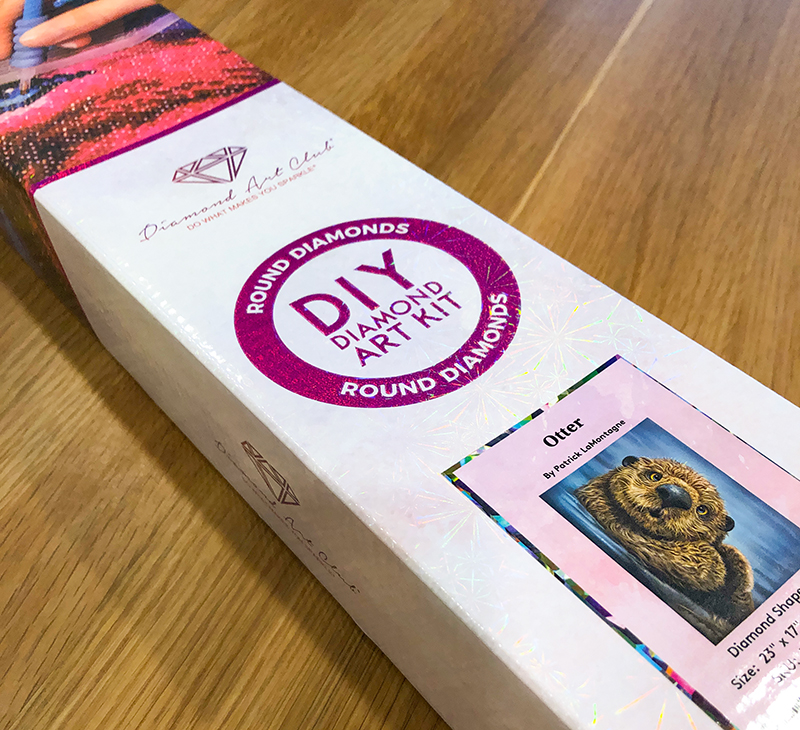
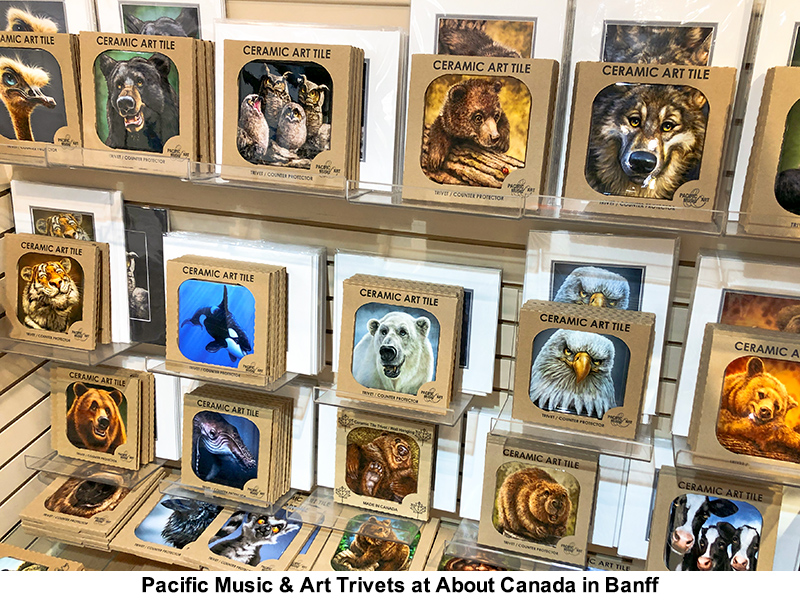
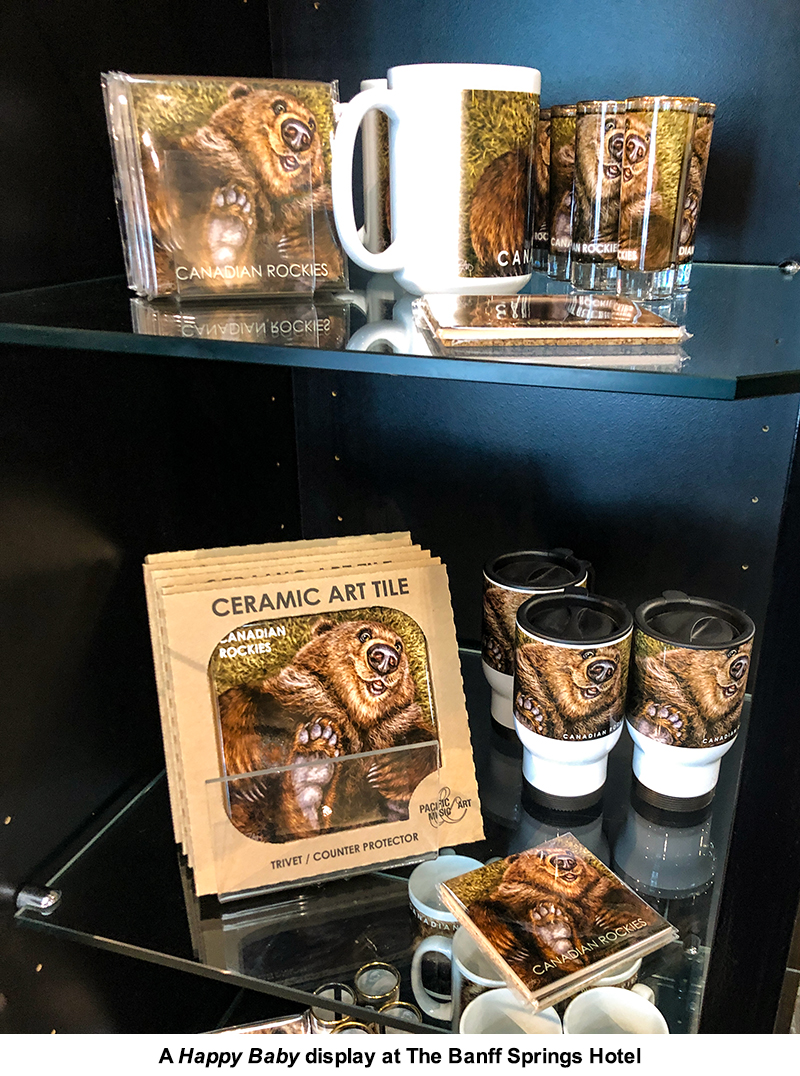
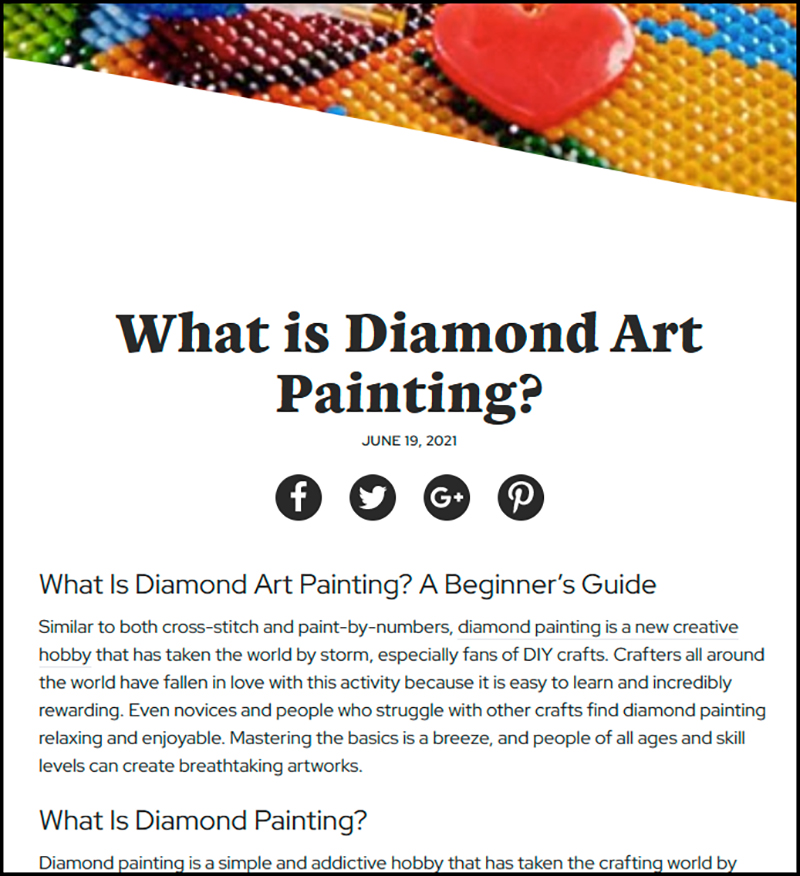
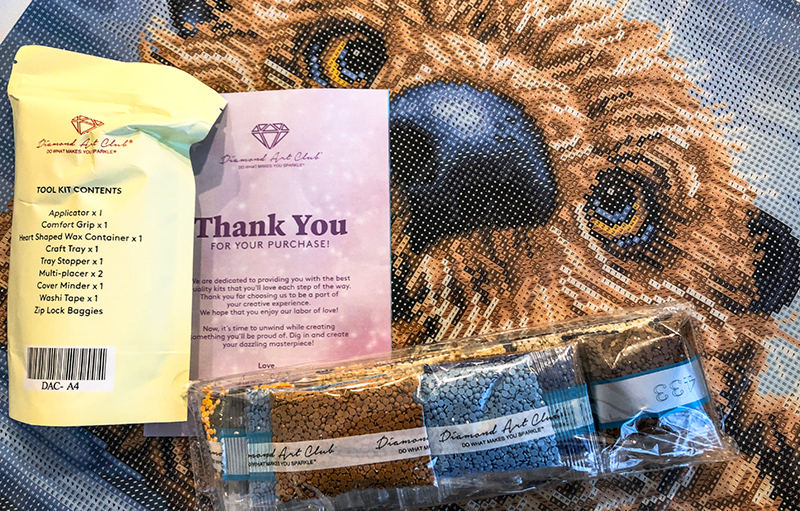
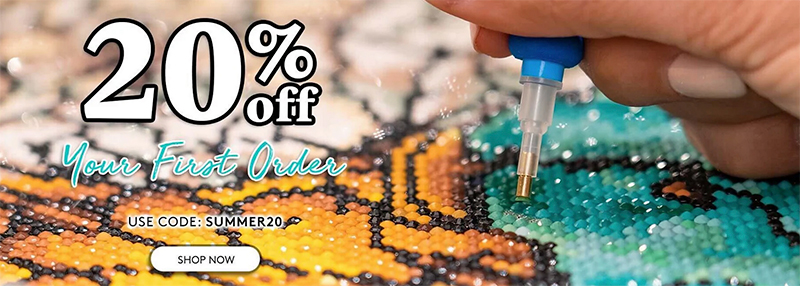

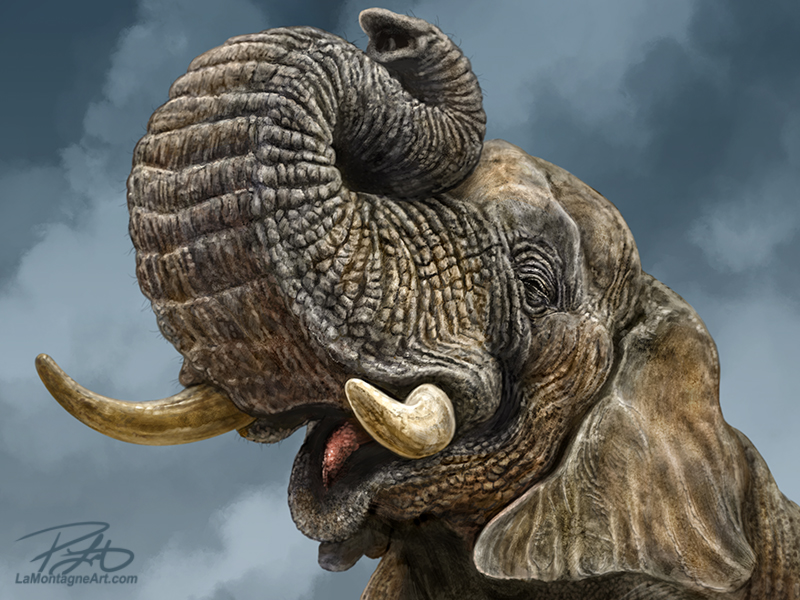 After more than two years of procrastinating, I finally finished this painting of an African elephant.
After more than two years of procrastinating, I finally finished this painting of an African elephant.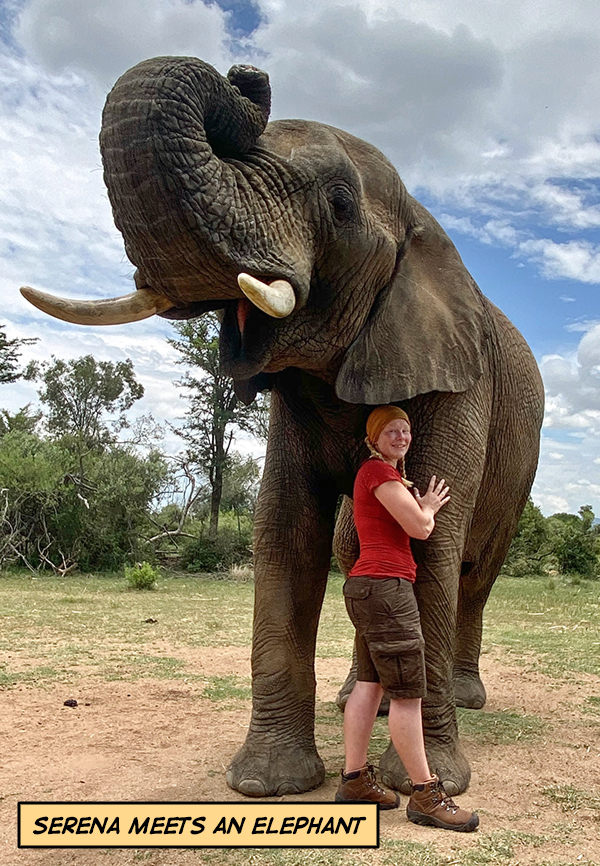
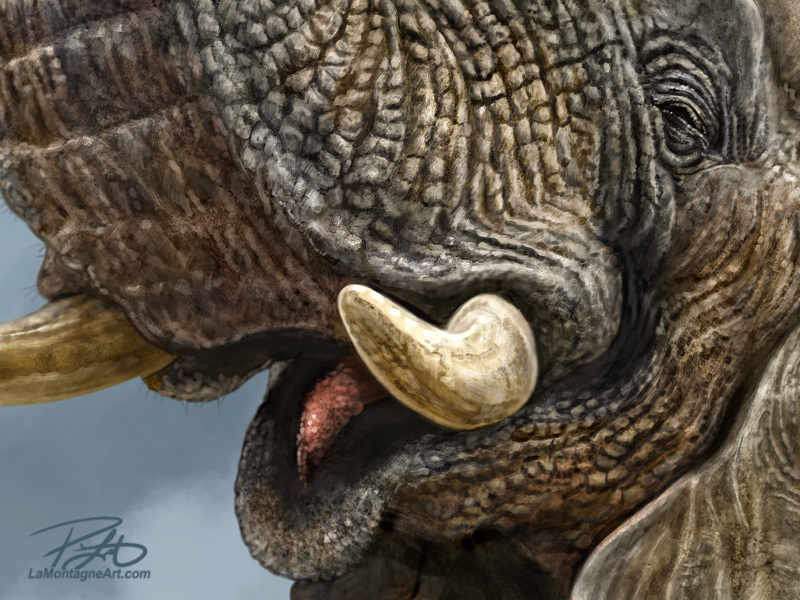 Secondly, the full-size four-day
Secondly, the full-size four-day 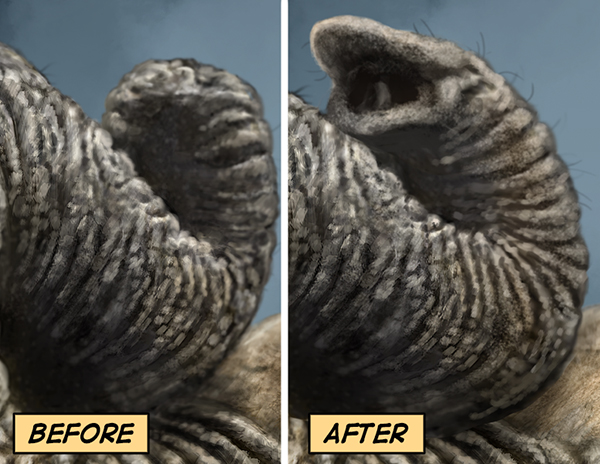 I sent a couple of changes to Serena, and she helped me get it right. She felt bad for having to tell me about it after I’d finished the painting, but I told her better than after I had bought dozens of prints, and coasters, trivets, magnets, and other licensed merchandise had gone into production.
I sent a couple of changes to Serena, and she helped me get it right. She felt bad for having to tell me about it after I’d finished the painting, but I told her better than after I had bought dozens of prints, and coasters, trivets, magnets, and other licensed merchandise had gone into production.
